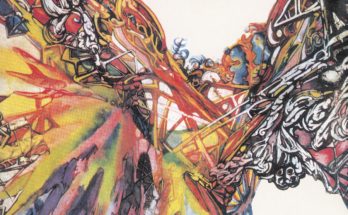By Rodrigo Díaz
Summer, which began on June 21, is the longest day of the year and the shortest night. This phenomenon, which we know as the summer solstice, means “when the sun stops,” or “quiet sun” in Latin.
Here we go into some detail. In the northern hemisphere, on approximately March 21 (the equinox) the sun rises exactly in the East (and sets in the West), and in the following days the point of departure moves towards the North, until at the summer solstice the sun «stops» and begins to move back to its starting point towards the South, until, again at the equinox, it emerges in the exact East.
Then the sun moves to its southernmost point (winter solstice) and returns to continue its fascinating dance between solstices and equinoxes. The phenomenon continues to amaze humanity, ever grateful since it became aware that its presence is essential for life. And that brings us to the theme that inspires these lines: June 21, in addition to being the solstice and the beginning of summer, was the International Day of the Sun, of the king sun, of the star of our system, worshipped ever since the first civilizations, some of which we note here.
Many anthropological studies have pointed out that multiple ancient civilizations gradually replaced the creator gods of the world and the universe as the target of their rituals, prayers, and sacrifices. They were seen as distant, inactive, and alien to human complexity, and were replaced by secondary gods, more active and close, who interceded for humanity for specific favors. That is why Zeus is more popular today than Cronos, or Tlaloc than Ometéotl.
The Romanian philosopher and historian Mircea Eliade (1907-1986) commented in this regard, “For reasons of protection (against adverse forces, against luck, etc.) and of action (the need to ensure their subsistence through fertility magic, etc.), Humanity feels more attracted to other religious ‘forms,’ on whom it also discovers that it is increasingly dependent: ancestors, civilizing heroes, great goddesses, magical-religious forces, cosmic centers of fertility, etc.»
It is in this part of the religious history of humanity that the Sun became relevant and gained a place on altars, and in temples and pantheons, worshipped as a fundamental deity in different eras, latitudes, and worldviews; or as the manifestation of larger and more powerful gods or forces. Thus, among the Wiradjuri-Kamilaroi people of southwestern Australia, the sun is regarded as Grogoragally himself, the son of the creator and a deity favorable to humanity. The Samoyeds from Russia see in the sun and the moon the eyes of Num (heaven): the sun is the good eye, the moon the bad.
In Africa, for example, the solarization of the supreme being was a recurring phenomenon; for the Munshes, the sun is the son of the supreme being Awondo and the moon is his daughter. The Baroste, for their part, make the sun the «home» of the sky god, Niambe, and the moon his wife.
One of the most illustrative examples of the phenomenon of solarization of the supreme being is by the Kolarian populations of India, as Eliade points out in his book Treatise on the History of Religions (1964): «The Munda of Bengal place Sing-bong, the sun, at the head of their pantheon. Sing-bong is a gentle god who does not meddle in the affairs of men. It is not that he is entirely absent from the cult. He receives sacrifices of white goats or white roosters and, in August, the time of the rice harvest, he is offered first fruits. Married to the moon, he is considered the author of cosmic creation, although in fact his cosmogonic myth involves, as subordinate demiurges, the turtle, the crab, and the leech. They are successively commissioned by Sing-bong to remove the land from the bottom of the ocean.”
These are some examples of the worldviews of ancient religions regarding the sun. The greatest civilization where Ra, the Sun God, stood out as the primordial figure of its deities was in Egypt. God of the star king, he is one of the oldest deities in Egypt. Ra is the creator of life, known as «the self-created,” who represented the Sun, but was also the Sun itself. Mounted on his barge, he crossed the sky during the day and descended to the underworld at night. There, in the darkness, Apophis, a giant serpent, attacked him nightly trying to prevent the sun from rising and thus destroying all life on earth. Represented as a falcon-headed man with the sun disk above his head, or as a beetle below the sun disk, he ruled ancient Egypt for many years until his secret name was discovered by Isis.
Through the sands of time, the Sun continues to be that great object of power on which life on earth depends, a source of light, heat, inexhaustible and clean energy; which perhaps inspires us to dedicate more of our attention to it, more of our gratitude, and to let ourselves be amazed by it.




